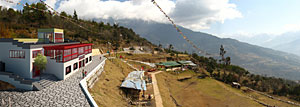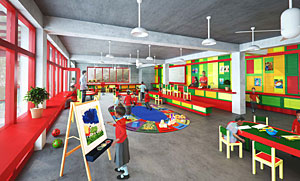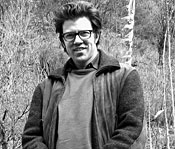|
While there are numerous nonprofits that aim to realize buildings for those in need, a fledgling Brooklyn-based organization wants to offer architectural assistance to a group of people it feels is underserved—the Tibetan exile community living in northeast India.
Named Architecture for Tibet, American designer John Ullman founded the registered nonprofit after visiting the small town of Tawang in the Himalayas. The initial motivation for his trip didn’t come from any grand ambitions: he needed to fulfill community service requirements as part of NCARB’s Intern Development Program, he explains. However, while teaching basic engineering and working on a master plan, he couldn’t help but notice that the local orphanage “needed a new school building very urgently.” By the end of a two-week trip in March 2007, he had promised that he would help build such a structure. “And when you make a promise to 150 kids, you want to make good on it,” he says.
Architecture for Tibet Fall Fundraiser
WHEN: Saturday, September 26, 6 to 8 p.m.
WHERE: Golden Bridge Yoga NYC, 253 Centre Street, between Broome St and Grand St.)
WHAT: Reception with food and drink, silent auction, and short screening, followed by Q&A with AFT founder John Ullman
INFO: info@architecturefortibet.org


Back in his hometown of New York, the 40-year-old Ullman established Architecture for Tibet in June 2008, and four months later left his job at Andrew Fredman Architect, where he worked on pricey Upper East Side townhouses, to focus on his organization full time. Ullman operates the organization out of a home office. While he completed the IDP, he has postponed taking his licensing exams until his organization is on solid footing; in the meantime, Architecture for Tibet counts registered architects Evan Akselrad and Brent Porter among its advisors.
The organization’s first project is the Manjushree Orphanage Academic Center. Envisioned as both a school and community center, the two-story, 10,000-square-foot facility will house classrooms, a library, a computer and language lab, and a multipurpose room, and will be equipped with a geothermal system for radiant heating. Ullman notes that in Tawang, “people experience eight months of winter, and three months of monsoon” and spend much of their time indoors. “This building,” he says, “is a way for them to continue their activities throughout the year.”
Although the organization is still in its infancy, Ullman expects to begin construction on the center in March 2010. Estimating that the main academic building will cost a total of $200,000—a second phase comprising standalone classroom buildings also is in the works—Architecture for Tibet is planning a series of fundraisers for this fall and spring, as well as a special invitation-only event. Ullman says high-profile supporters on the event committee include architect Daniel Libeskind, noted Buddhist Robert Thurman, and Thurman’s celebrity daughter Uma Thurman.
In the longer term, Architecture for Tibet aims to build similar educational facilities for other Tibetan communities. For now, Ullman’s primary focus is realizing the Tawang project as quickly as possible to prove that his organization has the ability to get things done. “All sorts of support is already coming in,” he says, noting that architects, engineers, and construction professionals in both the U.S. and India have volunteered to consult on the project. Seeing it all come together, he says, “is a great privilege.”


Post a comment to this article
Report Abusive Comment